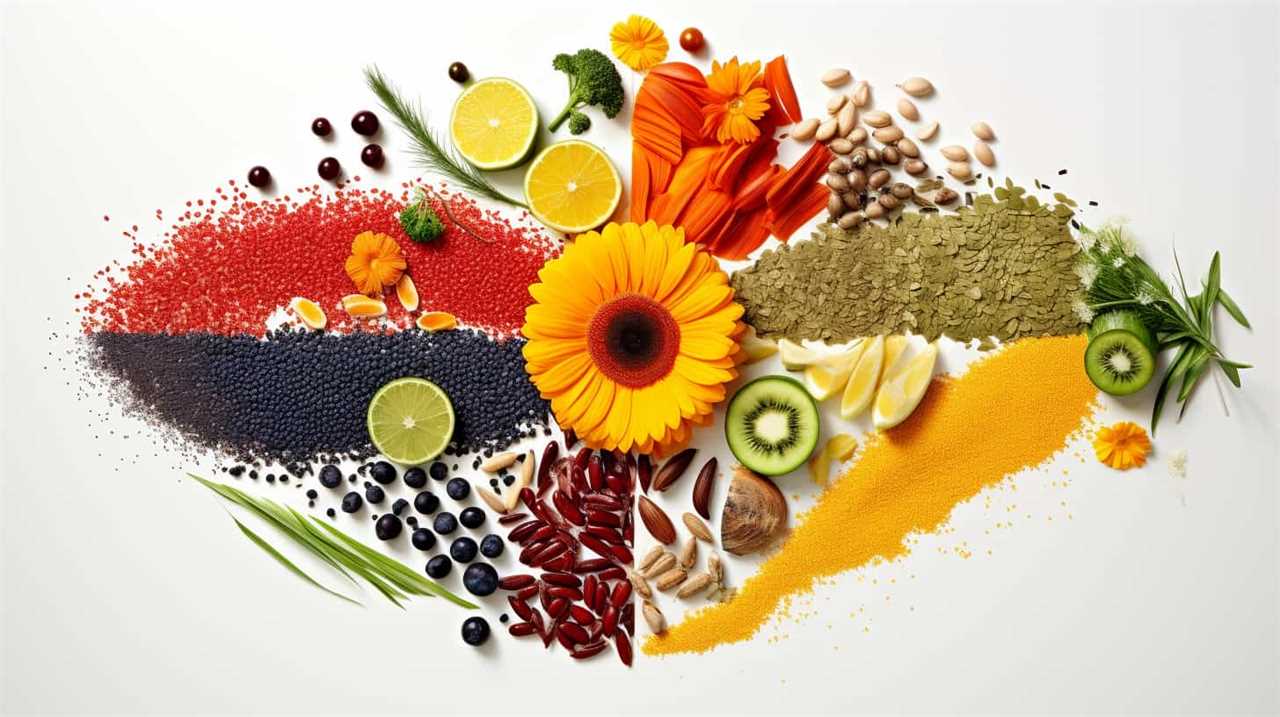Tap into your potential in the business farming industry by utilizing our in-depth guide on dominating the market through commercial Chia cultivation.
We’ll equip you with essential factors for successful chia seed production, help you choose the right chia seed varieties, and optimize cultivation techniques for higher yields.
With our data-driven approach and marketing strategies, you’ll be empowered to conquer the chia seed market and reap the rewards of your hard work.
Key Takeaways
- Lucrative market with potential for industry leadership
- Increasing demand for chia seeds due to health benefits and versatility in food products
- Steady stream of revenue and long-term financial stability
- Competitive edge in the market
Benefits of Commercial Chia Farming
One of the biggest benefits of commercial chia farming is that it allows us to tap into a lucrative market and establish ourselves as industry leaders.

The advantages of venturing into this thriving industry are numerous. Firstly, the profitability potential of chia farming can’t be overstated. The demand for chia seeds is rapidly increasing due to their numerous health benefits and versatility in various food products. By capitalizing on this trend, we can ensure a steady stream of revenue and long-term financial stability.
Additionally, commercial chia farming enables us to take advantage of economies of scale, leading to higher production volumes and lower production costs. This translates to increased profitability and a competitive edge in the market.
To maximize these advantages, it’s essential to consider several factors for successful chia seed production.
Essential Factors for Successful Chia Seed Production
To ensure successful chia seed production, we must carefully consider several essential factors that will contribute to our dominance in the market. These factors are crucial in maximizing yields and ensuring high-quality chia seeds.

- Soil quality: Choosing the right soil type and ensuring proper soil preparation are key factors in successful chia seed production. The soil should be well-drained, fertile, and rich in organic matter.
- Water management: Adequate water supply is essential for chia plants, especially during germination and flowering stages. Proper irrigation techniques and water scheduling are crucial to prevent water stress and maximize seed production.
- Pest and disease control: Implementing effective pest and disease control measures is essential to protect chia plants from potential threats. Regular monitoring, timely intervention, and the use of organic or integrated pest management approaches can help minimize losses and ensure healthy plant growth.
By carefully considering these factors, we can lay a strong foundation for successful chia seed production.
Now, let’s explore the next step in our journey: choosing the right chia seed varieties for commercial farming.
Choosing the Right Chia Seed Varieties for Commercial Farming
After considering essential factors for successful chia seed production, we’re now ready to explore the process of selecting the most suitable chia seed varieties for our commercial farming venture.
Choosing the right chia seed varieties is crucial for maximizing chia seed production techniques and ensuring profitability in the market.

To make an informed decision, we need to analyze various factors such as yield potential, adaptability to local conditions, disease resistance, and market demand.
Conducting thorough research and consulting with agricultural experts can help us identify the best chia seed varieties that will thrive in our specific farming environment and meet the requirements of our target market.
Optimizing Chia Seed Cultivation Techniques for Higher Yields
Continuing our exploration into optimizing chia seed cultivation techniques for higher yields, we can enhance our commercial salvia hispanica farming by implementing innovative methods and practices. To improve chia cultivation methods and increase chia seed production, we should consider the following strategies:
- Advanced irrigation systems: Utilizing efficient irrigation techniques such as drip irrigation or precision sprinklers can ensure optimal water distribution, minimizing wastage and maximizing crop growth.
- Soil nutrient management: Conducting regular soil tests and implementing targeted fertilization plans based on the specific nutritional needs of chia plants can lead to healthier growth and higher yields.
- Crop rotation and companion planting: Introducing rotational crops and companion plants that complement chia’s growth can help prevent diseases, pests, and nutrient depletion, resulting in improved overall cultivation outcomes.
By implementing these techniques, we can significantly enhance chia seed cultivation, paving the way for higher yields and increased profitability.

Now, let’s delve into the next section, where we’ll explore strategic marketing strategies to dominate the chia seed market.
Marketing Strategies to Dominate the Chia Seed Market
We will explore effective marketing strategies to dominate the chia seed market. In order to achieve dominance, it’s crucial to focus on brand positioning and digital marketing.
Brand positioning is the art of differentiating your chia seed brand from competitors, creating a unique identity, and highlighting the values that resonate with your target audience. This can be achieved through strategic messaging, storytelling, and visual branding elements.
Digital marketing plays a vital role in reaching and engaging with potential customers. Utilizing various digital channels such as social media, search engine optimization, and content marketing can help to increase brand visibility, generate leads, and drive conversions.

Conclusion
In conclusion, commercial salvia hispanica farming offers numerous benefits, including higher yields and profitable market dominance. By implementing essential factors for successful chia seed production and choosing the right chia seed varieties, farmers can optimize cultivation techniques and achieve higher yields.
With strategic marketing strategies, they can effectively dominate the chia seed market. Embracing data-driven approaches and leveraging the power of imagery, commercial chia farming can pave the way for success and profitability in the agricultural industry.
















